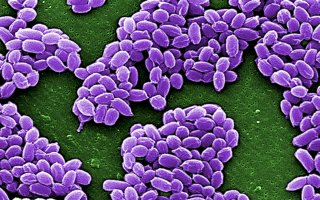How a Bioweapons Accident Killed Dozens of Russians in 1979
U.S. intelligence analysts were skeptical of the Soviet Union's official story.
Through May, at least ninety-nine Soviet citizens were infected and sixty-four died within a two-and-a-half-mile radius of the factory. Alibek claims he was told the actual count was closer to 105. For sheep, which were more susceptible to the spores, cases were reported within thirty miles.
Boris Yeltsin more or less supported Alibek’s account when he admitted to the chemical weapons program and the accident in a speech in 1993. Furthermore, Andrei Mironyuk, head of the Special Department of the Ural Military District, also testified to a chemical accident in Ural magazine in 2008. And of course, Yeltsin also allowed in international inspectors, including Matthew Meselson, whose findings now supported the explanation of bioweapons leak, as recounted in his wife’s history of the incident, Anthrax: The Investigation of a Deadly Outbreak.
Yet despite the former Russian president’s open testimony to the contrary, the Sverdlovsk incident is treated as an open question today in Russia, with some Russian officials sticking to the tainted-meat story. The Russian-language Wikipedia article on the incident lists both tainted-meat and factory leak narratives, and then lists a number of conspiracy theories blaming Western bioterrorists. Burgasov, the scientist who earlier had presented the “tainted meat” evidence in the United States, now claims that the anthrax strains in Sverdlovsk “are only found in” Canada or South Africa.
The Sverdlovsk incident illustrates both how inherently awful and self-destructive bioweapons have the potential to be, and the extent to which authoritarian societies engage in extraordinary deception and obfuscation to conceal their accidents and illicit activities. It should bring to mind the elaborate deception following the shooting down of Korean Air Lines Flight 007 in 1983. Even in the face of strong contravening evidence, indignant denials can sway the fair-minded and convince sympathetic observers.
By some accounts, the facility at Compound 19 remained active in Yekaterinburg and is still engaged in bioweapons production. States today already dispose of vast arsenals of destructive and inhumane weaponry, ranging from thermobaric warheads to nerve gas and nuclear warheads—so what need is there to add biological weapons to the mix? Surely, it should be in the collective interest of all nations to truly adhere to the ban on biological weapons, which have abundant potential to turn on their users, whether by accident or in the hands of terrorists.
Sébastien Roblin holds a master’s degree in conflict resolution from Georgetown University and served as a university instructor for the Peace Corps in China. He has also worked in education, editing and refugee resettlement in France and the United States. He currently writes on security and military history for War Is Boring.
This article first appeared in 2017.
Image: Reuters

